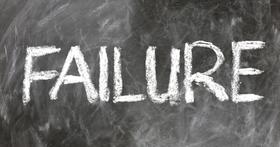Ozark Hills School serves 6 students in grades Kindergarten-12.
The percentage of students achieving proficiency in math is ≥50% (which is lower than the Missouri state average of 53%). The percentage of students achieving proficiency in reading/language arts is ≥50% (which is lower than the Missouri state average of 55%).
The student-teacher ratio of 6:1 is lower than the Missouri state level of 12:1.
Minority enrollment is 17% of the student body (majority Black), which is lower than the Missouri state average of 32% (majority Black).
Quick Facts (2025-26)
- School Type: Special education school
- Grades: Kindergarten-12
- Enrollment: 6 students
- Student-Teacher Ratio: 6:1
- Minority Enrollment: 17%
- Math Proficiency: ≥50% (Top 1% in MO)
- Reading Proficiency: ≥50% (Top 1%)
- Source: National Center for Education Statistics (NCES), MO Dept. of Education
Top Rankings
Ozark Hills School ranks among the top 20% of public schools in Missouri for:
Category
Attribute
Percent Eligible For Free Lunch
Community Size
Student Attention
School Overview
Ozark Hills School's student population of 6 students has declined by 40% over five school years.
The teacher population of 1 teachers has declined by 66% over five school years.
School Type
Grades Offered
Grades Kindergarten-12
(No virtual instruction)
(No virtual instruction)
Total Students
6 students
Gender %
Total Classroom Teachers
1 teacher
School Rankings
The diversity score of Ozark Hills School is 0.29, which is less than the diversity score at state average of 0.51. The school's diversity has stayed relatively flat over five school years.
Math Test Scores (% Proficient)
(12-13)≥50%
53%
Reading/Language Arts Test Scores (% Proficient)
(12-13)≥50%
55%
Student-Teacher Ratio
6:1
12:1
American Indian
n/a
n/a
Asian
n/a
2%
Hispanic
n/a
8%
Black
17%
15%
White
83%
68%
Hawaiian
n/a
1%
Two or more races
n/a
6%
All Ethnic Groups
Eligible for Free Lunch
100%
42%
Eligible for Reduced Lunch (15-16)
30%
6%
School Statewide Testing
School District Name
Source: National Center for Education Statistics (NCES), MO Dept. of Education
Profile last updated: 02/09/2025
Frequently Asked Questions
What schools are Ozark Hills School often compared to?
Ozark Hills Schoolis often viewed alongside schools like Salem Sr. High School by visitors of our site.
What percent of students have achieved state testing proficiency in math and reading?
≥50% of students have achieved math proficiency (compared to the 53% MO state average), while ≥50% of students have achieved reading proficiency (compared to the 55% MO state average).
How many students attend Ozark Hills School?
6 students attend Ozark Hills School.
What is the racial composition of the student body?
83% of Ozark Hills School students are White, and 17% of students are Black.
What is the student-teacher ratio of Ozark Hills School?
Ozark Hills School has a student ration of 6:1, which is lower than the Missouri state average of 12:1.
What grades does Ozark Hills School offer ?
Ozark Hills School offers enrollment in grades Kindergarten-12 (No virtual instruction).
What school district is Ozark Hills School part of?
Ozark Hills School is part of Missouri Schools For The Severely Disabled.
School Reviews
Review Ozark Hills School. Reviews should be a few sentences in length. Please include any comments on:
- Quality of academic programs, teachers, and facilities
- Availability of music, art, sports and other extracurricular activities
Recent Articles

Public School Open House & Enrollment Season Guide
A parent-focused guide to the public school open house and enrollment season, with expert questions, timelines, and decision tips.

School Supply Budget 2026: Fees, Books, Tech Costs
School Supply Budget 2026 guide for parents, covering fees, textbooks, technology, and hidden extras to plan ahead.

Education Funding in America (2025 Update)
Comprehensive 2025 update on public school funding in America, new federal and state policies, per-pupil spending, and equity challenges.





